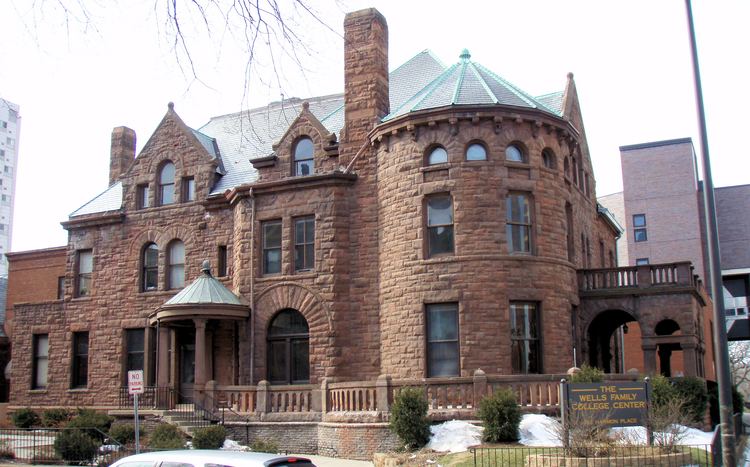Name William Whitney Role Architect | Died August 23, 1945 | |
 | ||
Structures Minnesota Governor's Residence, Charles J Martin House, Elbert L Carpenter House, Hinkle‑Murphy House, H Alden Smith House | ||
William Ellery Channing Whitney (April 11, 1851 – August 23, 1945) was an American architect who practiced in Minneapolis, Minnesota. He specialized primarily in domestic architecture, designing homes for many prominent Twin Cities families.
Contents

Early years
Whitney was born in Harvard, Massachusetts on April 11, 1851. The son of Benjamin F. Whitney, he was educated at the Lawrence Academy at Groton and Massachusetts Institute of Technology. He received a Bachelor of Science from the Massachusetts Agricultural College in 1872.
Career
Whitney worked in the Boston architectural office of William Ralph Emerson and Carl Fehmer for several years during the 1870s. After moving to Minneapolis in 1878, he formed an architectural partnership with James C. Plant which lasted six years. In 1885 he began to practice on his own and soon gained a reputation among the Minneapolis manufacturing and milling elite for his high-style residential designs. During his career he designed residences for Frank H. Peavey, James S. Bell, William H. Dunwoody, and others. The Saint Paul house he designed for Horace H. Irvine in 1911 is now the Minnesota Governor's Residence.
Whitney was known to be very style-conscious. He is credited with introducing the neo-Georgian style of architecture to Minneapolis with his design for the William J. Hinkle House in 1886. Within the tasteful exteriors that appealed to his upper-class patrons, Whitney's houses were full of modern innovations such as central vacuum cleaning plants, electrical refrigeration, and intercom systems. This allowed his houses to retain value after household staffing became less commonplace during the mid-twentieth century.
Whitney served on the Board of Trustees of the Minneapolis Society of Fine Arts from 1888 to 1896. As a prominent architect of Minneapolis, he was selected to design the Minnesota Building at the 1893 World's Columbian Exposition in Chicago. The structure was built under the impetus of the City Beautiful movement, whose aesthetic was expressed at the exposition's "White City." As a follower of the City Beautiful movement, Whitney was a strong proponent of city parks and ennobling urban schemes.
Whitney retired from practice in 1925. In his office were trained younger architects such as C.B. Chapman, Adam L. Dorr, and Serenus Colburn. He was a member of the American Institute of Architects.
Personal life
Whitney married Alma C. Walker on October 6, 1881. The couple had two daughters, Marion (born August 19, 1882) and Katherine (born March 16, 1888).
